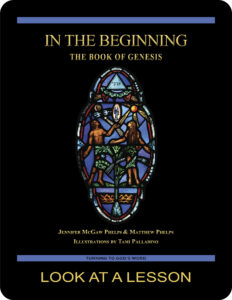wind & spirit
 Pentecost comes at the end of the Easter season. In the Old Testament, Pentecost was a celebration that occurred 50 days after the Passover and commemorated the giving of the law on Mount Sinai. For Christians, it falls 50 days after Easter and commemorates the descent of the Holy Spirit upon Jesus’ followers. As we think about this particular feast, it’s worth thinking a bit more about the image of Holy Spirit and what it suggests.
Pentecost comes at the end of the Easter season. In the Old Testament, Pentecost was a celebration that occurred 50 days after the Passover and commemorated the giving of the law on Mount Sinai. For Christians, it falls 50 days after Easter and commemorates the descent of the Holy Spirit upon Jesus’ followers. As we think about this particular feast, it’s worth thinking a bit more about the image of Holy Spirit and what it suggests.
The Greek word πνεῦμα (pneuma) is the word meaning “spirit” that we use to name the Holy Spirit. It comes from the verb πνέω (pneo), “to breathe” or “to blow,” and while it still does refer to and originate from the idea of breath, it tends to be used abstractly more like the way in which we use the word spirit. It’s even sometimes translated as “ghost.”
We tend to associate the Holy Spirit as God’s breath by referring to the account in the book of Genesis 2:7 (NABRE) that describes God breathing into clay to give Adam life. In fact, the Greek verb ἐμφυσάω (emphusao), “to breathe or blow into,” is used only once in the New Testament, in this week’s reading from the Gospel According to John 20:22 (NABRE): “And when he had said this, he breathed on them and said to them, ‘Receive the Holy Spirit.'” The Septuagint uses the same verb in the book of Genesis 2:7 (NABRE) to describe God breathing into Adam.
There is, however, also the connotation of spirit as blowing like wind. In the Acts of the Apostles 2:2 (NABRE), the disciples encounter a noise like a driving wind. The word used here for wind, πνοή (pnoe), comes from the same verb as pneuma but is obviously a distinct word that is used only twice in the New Testament, both times in The Acts of the Apostles. The second use is in the Acts of the Apostles 17:25 (NABRE) where it does mean “breath.” In the context of Pentecost, the ideas of wind and Holy Spirit seem to be kept linguistically distinct on purpose.
The Gospel According to John 3:8 (NABRE) seems less concerned with this distinction: “The wind [pneuma] blows where it wills, and you can hear the sound it makes, but you do not know where it comes from or where it goes; so it is with everyone who is born of the Spirit [pneuma].” John uses the same word to mean both wind and spirit in the same sentence from Jesus and seems to be interested in this association.
How do you see the working of the Holy Spirit in your life? Does it rush like a wind, or is it a life and breath inside of you?
related topics: inspiration; inspired by God; Pentecost; spirit
you also may like our study of the book of Genesis
 The first seven lessons of In the Beginning: The Book of Genesis, a 28-lesson Catholic Bible study with an imprimatur, provide an in-depth look at the very earliest biblical history—including the two accounts of Creation, events surrounding the Fall of Adam and Eve, the relationship between Cain and Abel, and the baptismal foreshadowing present in the account of Noah and the Flood. Remaining lessons look at lives of the patriarchs Abraham, Isaac, Jacob, and Joseph. Click on the book’s cover to view a sample lesson.
The first seven lessons of In the Beginning: The Book of Genesis, a 28-lesson Catholic Bible study with an imprimatur, provide an in-depth look at the very earliest biblical history—including the two accounts of Creation, events surrounding the Fall of Adam and Eve, the relationship between Cain and Abel, and the baptismal foreshadowing present in the account of Noah and the Flood. Remaining lessons look at lives of the patriarchs Abraham, Isaac, Jacob, and Joseph. Click on the book’s cover to view a sample lesson.
 Click on the picture of the statue of Moses with horns (above) to learn more about Lost in Translation. A new entry is archived each Monday. Contact us to receive Lost in Translation by email every week. You may use any of the contact links on our website to ask Matthew a question.
Click on the picture of the statue of Moses with horns (above) to learn more about Lost in Translation. A new entry is archived each Monday. Contact us to receive Lost in Translation by email every week. You may use any of the contact links on our website to ask Matthew a question.
